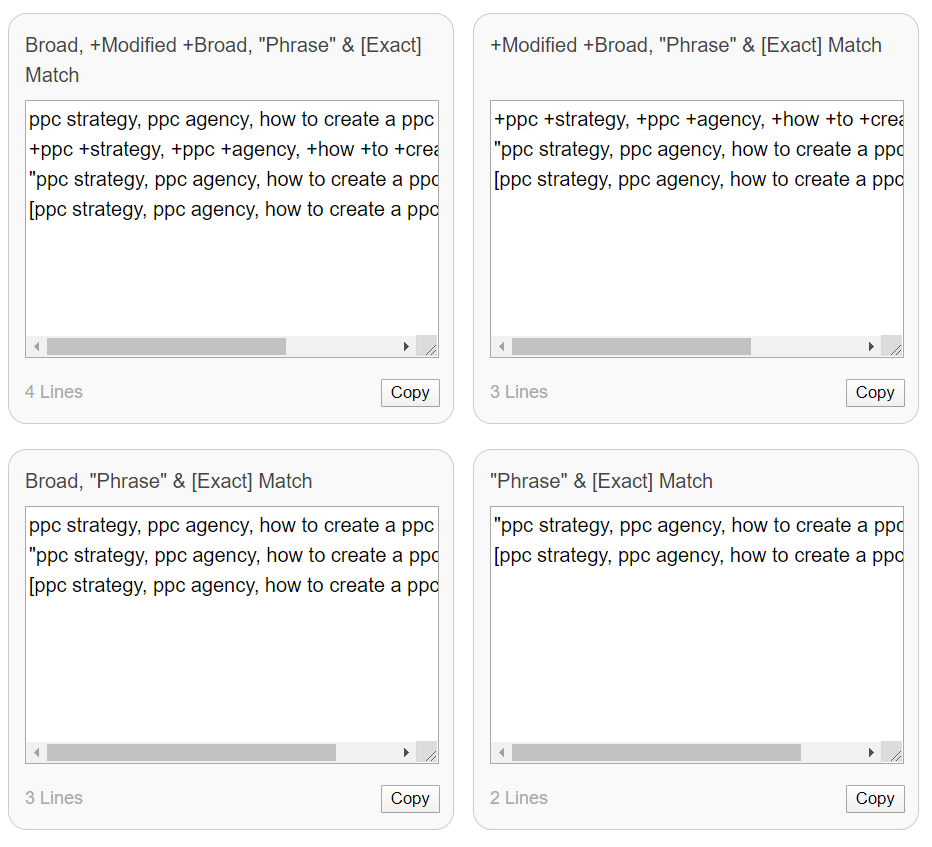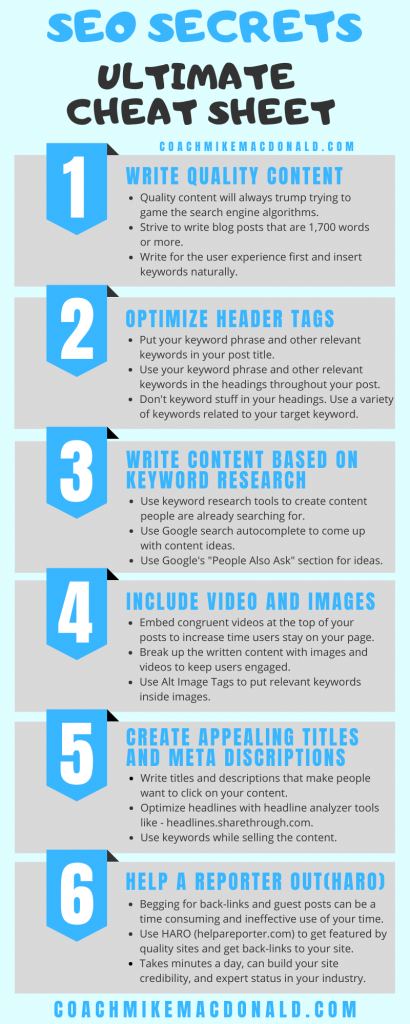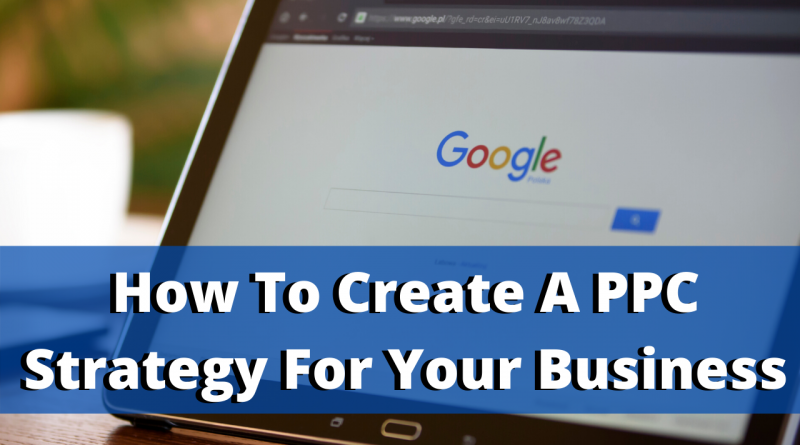How to Create a PPC Strategy That Converts at a High Level
Paid search or PPC provides businesses with a unique position in the search results. Rather than competing on organic rankings only, businesses can choose to maximize their visibility at a cost. How to create a PPC strategy that actually converts is a huge asset for your business. Google AdWords is a popular marketing tool for all budget sizes and learning how to use it can help you maximize your advertising budget. Because you can cap your budget to a specific cost you are happy to spend every day, you can run search marketing campaigns even on a tight budget. In this post, you’ll learn tips on how to create a PPC strategy that converts at a high level.
What is PPC and how does it work?
PPC stands for pay per click advertising. Typically PPC ads are run through the Google Ads platform. However, other platforms like Facebook advertising also has a PPC component. PPC or pay per click advertising consists of running paid ads where the advertiser is charged each time someone clicks on the ad.
This advertising strategy can be very powerful because it can get your website traffic quickly. Instead of having to wait for your content marketing or SEO strategy to kick in and bring organic traffic, you can pay to receive quality traffic quickly.
There are two common versions of PPC and each has a slightly different PPC strategy to make them successful. The two most common sites to run PPC ads on are Google Ads and Facebook ads.
The PPC strategy for Google Ads is going to be based around search intent. This means you are going to bid on keyword terms to run ads on and you will be charged each time someone clicks your ad from a given set of keywords. Typically this means that your ads can be more targeted as they are usually based on keywords that have a high buying intent.
A Facebook ads PPC strategy is going to be more based on demand generation. Facebook ads are not based on keywords people are searching for, therefore you need to create demand and interest for your business with your ads.
You can still run ads based on clicks or PPC with Facebook, but you are showing your ads based on interests, demographics, or custom audiences vs via keywords or interests like with Google Ads. Each type of PPC strategy has advantages and disadvantages, but Google Ads often are a bit more confusing for someone just getting started.
Understanding PPC terms used with Google Ads
Some of the terms that you are going to want to know in order to create a successful PPC strategy are things like a phrase match, exact match, and board match. If you don’t fully understand these terms and how to properly use them on Google Ads you can end up wasting a lot of money on irrelevant search traffic.
Phrase match is when ads will run on search terms that only include the phrase you entered exactly or a very similar variation plus any words before or after the phrase. Exact match is when your ads run only for when that specific keyword term is searched or a very close variation. Broad match will show your ads to your keyword and other close keywords or related keywords to the one you have selected.
When you choose the broad match strategy you have the opportunity to gain more exposure to your ads, but a lot of the traffic and clicks could be irrelevant. This means you could end up wasting money generating clicks from the wrong people.
Typically an exact match or a phrase match will work best for your PPC strategy. This is because the ads will likely only show up for the people searching for the most relevant terms you have selected.
A helpful tool to use when running Google Ads and can make your PPC strategy easier to implement is called Adwordswrapper. As you can see in the photo below, you can simply enter a series of keywords, and then it will output the proper way to structure the keywords based on your PPC strategy using phrase match, exact match, broad match, and more.

Design a tailored PPC strategy
Each business is different. As a result, understanding the specific needs of your company and how to tackle those using a PPC strategy can make a huge difference to your results. Indeed, it is fair to say that an HVAC PPC strategy should be different from a plumbing, catering, healthcare, or marketing agency PPC strategy.
Therefore, you need to design a strategy that matches your needs and can promote your services in the most relevant manner to your audience. This includes promoting your business on both a local and national level, depending on your business requirements.
Your tailored strategy acts as a compass, letting you know what your business wants to achieve and how to design your PPC campaigns to meet your goals. For example, are you simply trying to drive traffic to specific content on your website to build awareness? Maybe you want to use your PPC advertising as a lead generation strategy?
The options are almost limitless, which is why it is so important to choose your business goals first before you jump into PPC advertising.
Optimize your landing page SEO to improve your PPC strategy
While Pay-per-click advertising promotes your presence in search results, the success of your campaign also relies on your organic SEO strategy. Indeed, SEO-optimized landing pages and websites are prioritized in PPC bids. Therefore, you need to focus your attention on optimizing your landing pages.
The work will include keyword research and placement for your content, technical factors such as load speed and accessibility, and meta tags. Landing pages with the highest SEO scores are likely to pay less per click in Adwords bids, which makes your campaign not only more successful but also more cost-effective.
Check out the SEO secrets checklist and video below to make sure you are building a proper search-optimized landing page.

Like this SEO Optimization Infographic? Here’s the embed code to share!
<img class=”wp-image-7812 size-full aligncenter” src=”https://coachmikemacdonald.com/wp-content/uploads/2020/02/Seo-Secrets-Checklist-Infographic-1.png” alt=”Seo Secrets Checklist Infographic (1)” width=”800″ height=”2000″ />
A/B testing can be a game-changer for your PPC strategy
How do you know which ad text is going to work best? Now is not the time for educated guesses. You need to try out different options, using A/B experiments, to find out what works with your audience.
Small wording changes can have a massive impact on your CTR. Therefore, you need to use the preparatory phase to test out ad content, landing page content, and call-to-action buttons. At the same time, A/B testing should be a continual process.
If you only do one A/B test, you are leaving a lot of room for improvement. Even the slightest change in wording could have a huge impact on the results of your PPC campaign.
What you measure and track you can improve on. Click To TweetIt is also important to give yourself enough data to work with. Often people think they have performed and A/B test when they have only had a few hundred visitors. That can give you some idea, but ideally, you want to have at least 100 conversions or 5000 visitors to a page before you really have a good idea on which landing page is best.
Know your audience to optimize for search intent with your PPC advertising
So, you know your product inside out. But do you know your target audience? Understanding the intention behind each keyword search is crucial to your success. Consequently, you need to include behavioral analysis to your audience targeting, to ensure you are selecting the right search terms.
Additionally, understanding the complex network of in-market audiences and remarketing platforms can also improve targeting significantly. In other words, the preparatory phase focuses on getting to know your audience through analysis, experiments, and research. How to create a PPC strategy that converts at high-level hinges on understanding your target market.
Knowing your target market consists of things like what they like to do for fun, what influences do they pay attention to, what are their problems, what common questions do they have, and knowing what their goals are. You need to get into the mindset of your ideal customers and be able to anticipate what they are thinking at each stage of the buying process.
You need to be able to determine which keywords have buying intent behind them, and which ones are focused around being in research mode. Some keywords sound great but they don’t actually attract buyers to your site. When you are paying for clicks you need to make sure those who click have a high intention of buying.
Knowing your audience and ideal customers can help you to choose the right keywords to optimize your PPC ads. However, even with that being said, you still are going to need to go through a testing and tracking period to see what actually converts.
You can have the best intentions of what keywords will work well, but the reality of actually running your PPC strategy could tell you something completely different. Know your audience, but always test and track either way.
Try other options beyond a PPC strategy with Google Ads by running Facebook ads for your business
At the beginning of this post, we talked about some of the differences between Google Ads and Facebook ads. It’s true that each has advantages and disadvantages, and one disadvantage with a Google Ads PPC strategy is that you need to know the right keywords to use. If you don’t you could waste a lot of money advertising to the wrong people.
An advantage of running Facebook ads for your business is that you can create custom audiences and lookalike audiences based on your website visitor’s behavior. For example, one of the best lookalike audiences you can create is based on your existing customer list.
With a lookalike audience based on your existing customers, the likelihood that someone in that audience will also be a buyer is very high. You can start your advertising campaign using this audience for targeting to greatly improve your conversion rates.
Another advantage of Facebook advertising is the ability to use remarketing at a lower ad spend threshold. According to Google, their policy on “customer match” requires that you need to spend over $50,000 of ad spend and have used the platform for a minimum of 90 days.
If you are just getting started or are running a small business, it’s unlikely you have an extra $50,000 to drop on ads just to be able to get targeting advantages by uploading a customer list.
With Facebook ads, you can do this on day one. Just create a business manager account, upload your list, and create a lookalike audience. Click here if you are interested in learning more about our Facebook advertising package.
Bottom line, when it comes to how to create a PPC strategy that converts at a high level, prepare, research, and improve until you are achieving your ideal results.
Running PPC ads and marketing your business effectively can be tough, so let us do it for you. Click here to fill out a quick survey on your business to see how our team can help!
Did This Blog Help You? If so, I would greatly appreciate if you could comment below and share on Facebook

Mike MacDonald
Facebook: facebook.com/coachmikemacdonald
Email: [email protected]
Check out my #1 Recommendation for Making Money Online Here!
“I help coachable and teachable professionals become Financially Free and Live Full Time! Helping you create a better tomorrow through a better you!”
P.S. If you don’t yet have an affiliate marketing business, but would like to learn how to start one and make money from home, CLICK HERE
If you enjoyed this post on How to Create a PPC Strategy That Converts at a High Level, please retweet and comment below.



